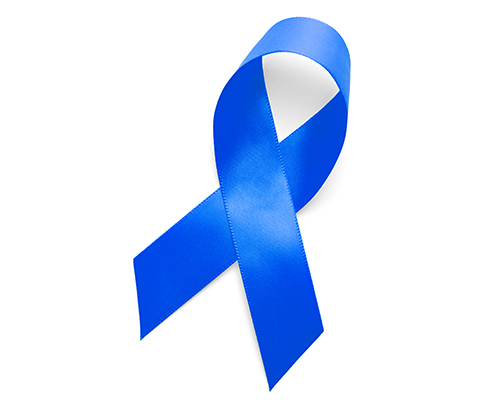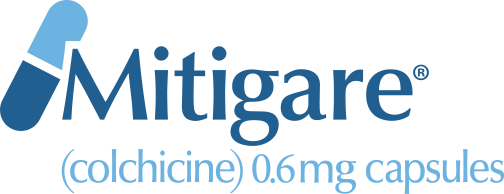
Gout Awareness Day, May 22, was created to raise awareness of and educate people about this extremely painful form of inflammatory arthritis.1 Read on to learn more about this common ailment and what you can do to prevent flares.
An ancient disease
Gout has been around for thousands of years.2 Excess uric acid in the bloodstream, a medical condition called hyperuricemia, is the primary cause.3 Uric acid can build up when the body produces too much of it or cannot eliminate it properly.3
How gout flares happen
As the amount of uric acid in the body rises, sharp, needle-shaped crystals can start to form around one or more of the joints.3 Eventually, the amount of uric acid in the body reaches a certain level and the body begins to react to these crystals as if they were bacteria or a foreign substance.3 When this happens, white blood cells and other infection-fighting cells rush to the area, causing painful swelling, redness and tenderness in the process.3
The who and where of gout
More than eight million Americans suffer with gout, and it affects about three times as many men as it does women.4 For most people with the disease, the first joint affected is in the big toe.5 Gout flares can also occur in the forefoot, instep, heel, ankle and knee.1 Although gout is not as common in the upper body, it can strike the fingers, wrists and elbows as well.1
Short- and long-term effects of gout flares
Your first gout attack might last anywhere from a few days to a few weeks, but the worst pain usually occurs within the first four to 12 hours.6 Although months or even years might go by before another attack occurs7, it’s important to note that later attacks typically last longer and may affect multiple joints6. If left untreated, gout can eventually cause permanent bone and joint damage.8
Risk factors for gout and gout flares
Recent research has shown that there is a strong association between genetics and the risk of gout—stronger even than the relationship between diet and the risk of gout.9-11 However, other factors can play a part as well:
- Your weight6—Your risk of developing gout is higher if you are overweight or obese.
- Your age and gender—Men are three times as likely to develop gout4, and most are diagnosed between the ages of 30 and 506. Women are more likely to develop the disease after menopause.6
- Certain medications6—Thiazide diuretics (often used to treat hypertension), low-dose aspirin and anti-rejection drugs (given to patients after organ transplants) can drive up uric acid levels.
- Certain medical conditions6—Untreated high blood pressure and chronic conditions such as diabetes, metabolic syndrome and heart and kidney disease can increase your risk of gout.
- Recent surgery or trauma6—Both can elevate your risk of a gout attack.
- Your diet6—Although genetics have a greater impact on gout risk than what you eat, consuming foods that contain a lot or purines (substances that occur naturally in your body and in some foods, such as red meat and certain types of seafood) can elevate the uric acid level in your body. Drinking alcohol and sweet beverages can raise the level as well.
Complications of gout
Although gout flares may not happen often at first, they can become more and more common if the disease goes untreated.8 In addition, some people with untreated gout develop lumpy, chalky deposits called tophi under the skin around their affected joint(s).8 Untreated gout may also eventually lead to permanent bone and joint damage and deformity.8
Medication is available to prevent flares
Fortunately, medication is available to help prevent painful gout flares.12 , the active ingredient in Mitigare® (colchicine) 0.6 mg Capsules and Generic Colchicine 0.6 mg Capsules, has been used for centuries.2 Today, colchicine remains one of the most frequently used drugs for preventing the inflammation associated with gout flares.13
The safety and effectiveness of Mitigare® for acute treatment of gout flares during prophylaxis has not been studied. Mitigare® is not an analgesic medication and should not be used to treat pain from other causes.
What to do if you think you have gout
If you suspect that you have gout, make an appointment to discuss your concerns with your doctor. It’s important to get the disease under control as soon as possible, and medications are available to help you manage it. You may want to download and complete the Gout Flare Questionnaire (from Resources for Patients) beforehand and bring it with you to review at your appointment.
Important Safety Information
Colchicine 0.6 mg capsules are contraindicated in patients with renal or hepatic impairment who are currently prescribed drugs that inhibit both P-gp and CYP3A4. Combining these dual inhibitors with colchicine in patients with renal or hepatic impairment has resulted in life-threatening or fatal colchicine toxicity. Patients with both renal and hepatic impairment should not be given Mitigare®.
The most commonly reported adverse reactions with colchicine are gastrointestinal symptoms, including diarrhea, nausea, vomiting, and abdominal pain. Click here for complete product information, including a patient Medication Guide.
Fatal overdoses have been reported with colchicine in adults and children. Keep Mitigare® out of the reach of children.
Blood dyscrasias such as myelosuppression, leukopenia, granulocytopenia, thrombocytopenia, and aplastic anemia have been reported with colchicine used in therapeutic doses.
Monitor for toxicity and if present consider temporary interruption or discontinuation of colchicine.
Drug interaction with dual P-gp and CYP3A4 inhibitors: Co-administration of colchicine with dual P-gp and CYP3A4 inhibitors has resulted in life-threatening interactions and death.
Neuromuscular toxicity and rhabdomyolysis may occur with chronic treatment with colchicine in therapeutic doses, especially in combination with other drugs known to cause this effect. Patients with impaired renal function and elderly patients (including those with normal renal and hepatic function) are at increased risk. Consider temporary interruption or discontinuation of Mitigare®.
Please see full Prescribing Information and Medication Guide for Mitigare® for complete product details.
NOTE: This article was not written by a medical professional and is not intended to substitute for the guidance of a physician. These are not Hikma’s recommendations for gout flare prevention, but rather facts and data collected from various reliable medical sources. For a full list of resources and their attributing links, see below.
